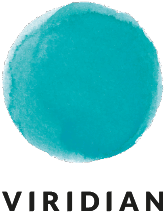
Earning the title ‘the spark of life,’ magnesium is involved in over 300 body processed. Fittingly, magnesium burns bright when set alight (for those who remember their chemistry lessons!)
Involved in hormone production, energy metabolism, relaxation of muscles, balancing electrolytes, and playing a regulatory role at the cellular level, magnesium is the jack of all trades. [1] As a result, low magnesium status has a body wide impact which is linked to low mood, poor sleep, fatigue, stress, hormonal imbalances, among other symptoms.
Worryingly, magnesium content in the western diet is decreasing.[2] With the expanding food production volume, nutrient density has been lost. Current intensive farming practices have depleted farmland of nutrients. These methods rely on chemical fertilisers rather than organic matter for remineralisation which promotes a nutrient shortage. Ultra-processed foods also have lower nutrient content, such as refined grains which are common in the modern western diet.
Considering magnesium’s role in detoxification; certain medications, excessive alcohol consumption, substance abuse, and smoking can deplete stores. Hot weather and healthy activities such as intense exercise or saunas cause us to sweat which also reduces magnesium levels in the body.
Achieving adequate magnesium intake through diet alone is quite difficult with the majority of UK adults not reaching the Reference Nutrient Intake (RNI) of magnesium[3] . Getting adequate magnesium intake through food is potentially possible but takes hard work and a lot of diet planning, this is where supplementing may be beneficial.
Why are there so many different types of Magnesium?
There are many different types of magnesium supplements available on the market and it may be confusing to work out which one is best for you. Different chelated forms of magnesium may have different properties. Chelation is the binding of a mineral to another compound; for example, magnesium citrate is a stable salt formed by chelating magnesium to citric acid. Fully reacted chelation is not as simple as adding magnesium and citric acid together. They must undergo a process to fully react to the compounds to ensure the mineral is fully bound resulting in a quality source of magnesium.
There are several chelated forms of magnesium that are approved for use in Europe and the UK. The table below defines the approved forms, as well as some forms that are not permitted for EU manufacture.
Table 1; EU permitted and non-permitted Magnesium chelates.
|
EU permitted forms of magnesium in food supplements |
EU non-permitted forms of magnesium |
|
Magnesium Ascorbate |
Magnesium Orotate |
|
Magnesium Bisglycinate |
Magnesium Threonate |
|
Magnesium Carbonate |
|
|
Magnesium Chloride |
|
|
Magnesium Citrate |
|
|
Magnesium Malate |
|
|
Magnesium Oxide |
|
|
Magnesium Sulphate |
|
|
Magnesium Taurate |
|
There is a lot of confusion around magnesium, not just from the forms, but the delivery mechanism as well. With such a wide variety of magnesium products, from food supplements and oral sprays to bath salts and topical sprays and creams available, it can be difficult to choose a product that is best suited for you.
An absorbing story
There is no superior form of magnesium. Different forms of magnesium will have different levels of bioavailability, the rate at which the magnesium is absorbed, but this does not equal effectiveness. Magnesium oxide is by far the most researched form of magnesium and has been proven to improve magnesium status as effectively. Other forms such as magnesium citrate, magnesium taurate, and magnesium bisglycinate are also effective at improving magnesium status. Ionic magnesium has the highest level of absorption as it is not bound to any other element or compound, thus immediately available to the body.
It is important to remember that high bioavailability is not always better as the body regulates absorption based on its needs. Magnesium levels are regulated by the kidneys and magnesium absorption is led by the existing level of magnesium in the body. This means the greater the depletion, the greater rate of absorption in the body to compensate for the low levels. If Magnesium levels are adequate, absorption will be slower. [4]
Magnesium absorption is more closely influenced by current magnesium status, rather than the element or compound that the magnesium is bound to. Other factors that influence magnesium intake is intestine health. Poor intestinal health can reduce the absorption of nutrients, including magnesium. [5]
Magnesium myth busting
Magnesium is one of the most popular food supplements in the UK, with a wide array of products to choose from. From this, many myths, misinformation, or misunderstandings have arisen.
You cannot choose where magnesium will be used in the body. From bone health to hormone production, magnesium is involved in so many different systems, the body will use it where it is most needed. Dietary magnesium will be used in multiple different functions around the body at the same time. You will most likely see general benefits from magnesium supplementation as well as improving overall magnesium status which in turn can support different areas of health, like sleep or muscle relaxation. [6]
Capsules are not the only way to supplement magnesium. Magnesium citrate is a water-soluble powder that can be added to cold water or drinks. This allows for adjustable dosing and is more appropriate if higher doses are needed. Liquid electrolyte formulations, such as those derived from the pristine environment of the Great Salt Lake in Utah may be useful for those who are unable to take capsules, as well as those wanting to supplement during hot weather on the go or physical activity.
Not all forms of magnesium are suitable for supplementation. Magnesium Stearate is a magnesium bound to two stearate molecules, a fatty acid which naturally occurs in animal products. There is roughly 4-5% magnesium by mass in magnesium stearate, this may appear like a somewhat beneficial source of magnesium, but it is a commonly used excipient by manufacturers for its dry lubricant properties and as a flow agent, which keeps ingredients in capsules from sticking together, and does not produce usable magnesium for the body.[7]
Topical magnesium may not be effective. While this is a current trend among the general population and athletes alike, there is no sound scientific evidence to support the use of magnesium topically. Research has found that oral supplementation is far more effective, with consistent results in raising magnesium levels in the body. [8]
To wrap up
There are a lot of magnesium products available to the consumer in supermarkets, pharmacies, online, and health food stores. Food supplements have been found to be the most effective way to improve magnesium intake consistently, safely, and effectively.
There is no ‘one size fits all’ magnesium supplement. Some people may benefit from specific single form and others may benefit from a blend of forms, and others may benefit from plant-based sources. You should judge your chosen magnesium supplement after 30 days of consistent supplementation to see if the product works for you or if you need to re-assess and potentially choose another. Look for a clean, pure form of magnesium with no excipients.
For more information, visit your local health food store for dietary, supplement and lifestyle advice. Find your local health store at www.findahealthstore.com.
Author: Will Jordan, BSc (Hons) MSc, is a Nutrition Advisor at Viridian Nutrition. He holds a Master’s degree in Sports and Exercise Nutrition, BSc in Food and Nutrition.
References:
1 Brink EJ, & Beyen AC. Nutrition and magnesium absorption: a review. Progress in Food & Nutrition Science. 1992; 16 (2) 125-162
2 Fan MS, Zhao FJ, Fairweather-Tait SJ, Poulton PR, Dunham SJ, & McGrath SP. Evidence of decreasing mineral density in wheat grain over the last 160 years. Journal of Trace Elements in Medicine and Biology. 2008; 22 (4) 315-324
3 Derbyshire E. Micronutrient Intakes of British Adults Across Mid-Life: A Secondary Analysis of the UK National Diet and Nutrition Survey. Frontiers of Nutrition. 2018; 19 (5) 55
4 Jahnen-Dechent W, & Ketteler M. Magnesium basics. Clinical Kidney Journal. 2012; 5 (1) i3-i4
5 Blancquaert L, Vervaet C, & Derave W. Predicting and Testing Bioavailability of Magnesium Supplements. Nutrients. 2019; 11 (7) 1663
6 Shechter M, Saad T, Shechter A, Koren-Morag N, Silver BB, & Matetzky S. Comparison of magnesium status using X-ray dispersion analysis following magnesium oxide and magnesium citrate treatment of healthy subjects. Magnesium Research. 2012; 25 (1) 28-39
7 Ertel KD, & Carstensen JT. Chemical, Physical, and Lubricant Properties of Magnesium Stearate. Journal of Pharmaceutical Sciences. 1988; 77 (7) 625-629
8 Gröber U, Werner T, Vormann J, & Kisters K. Myth or Reality – Transdermal Magnesium? Nutrients. 2017; 9 (8) 813
The information contained in this article is not intended to treat, diagnose or replace the advice of a health practitioner. Please consult a qualified health practitioner if you have a pre-existing health condition or are currently taking medication. Food supplements should not be used as a substitute for a varied and balanced diet.







